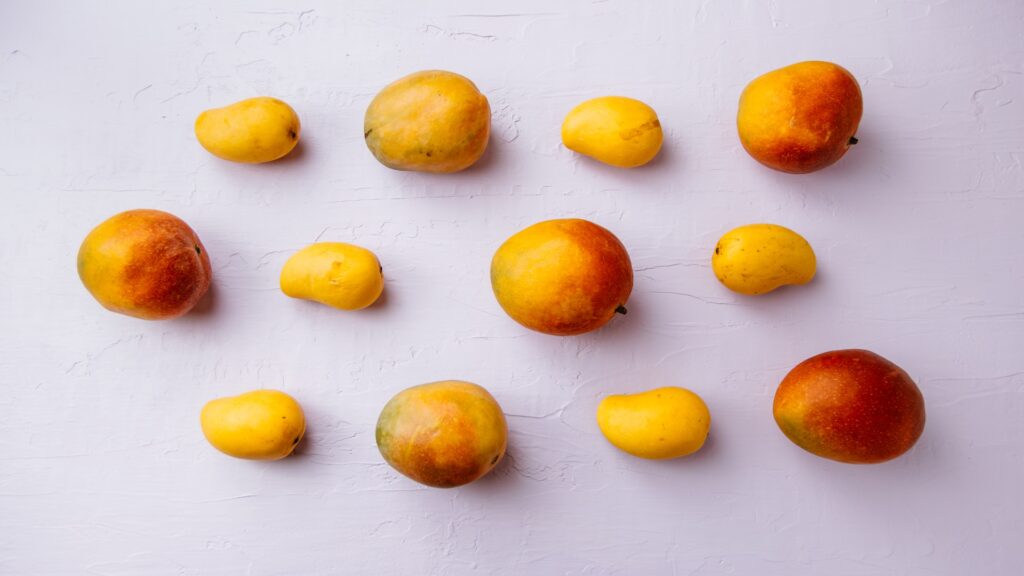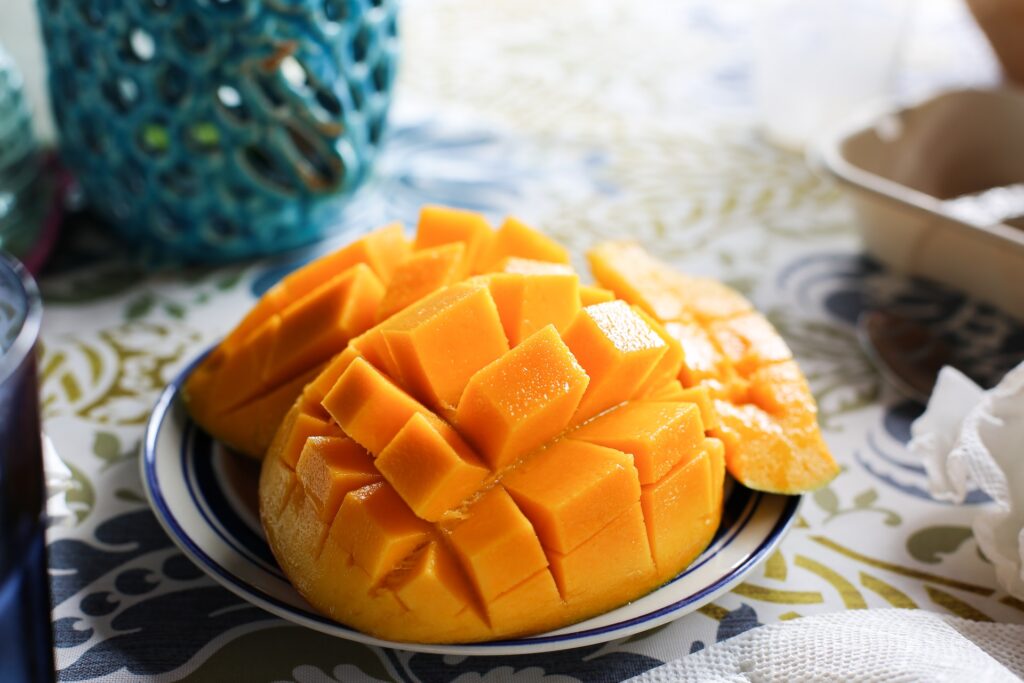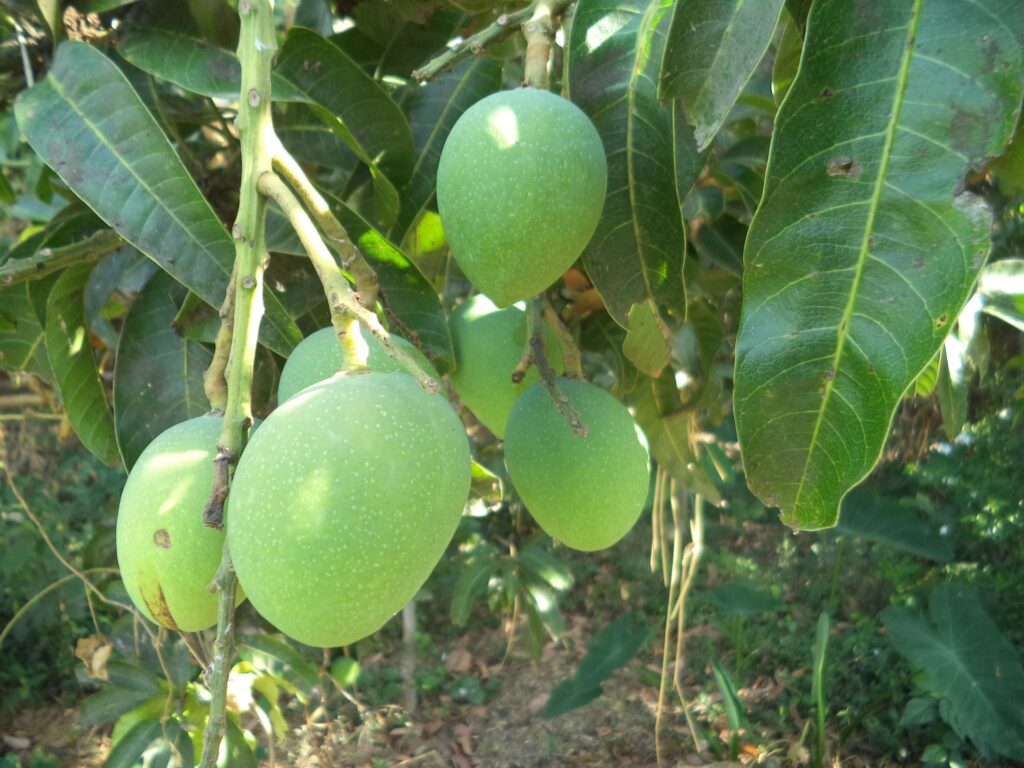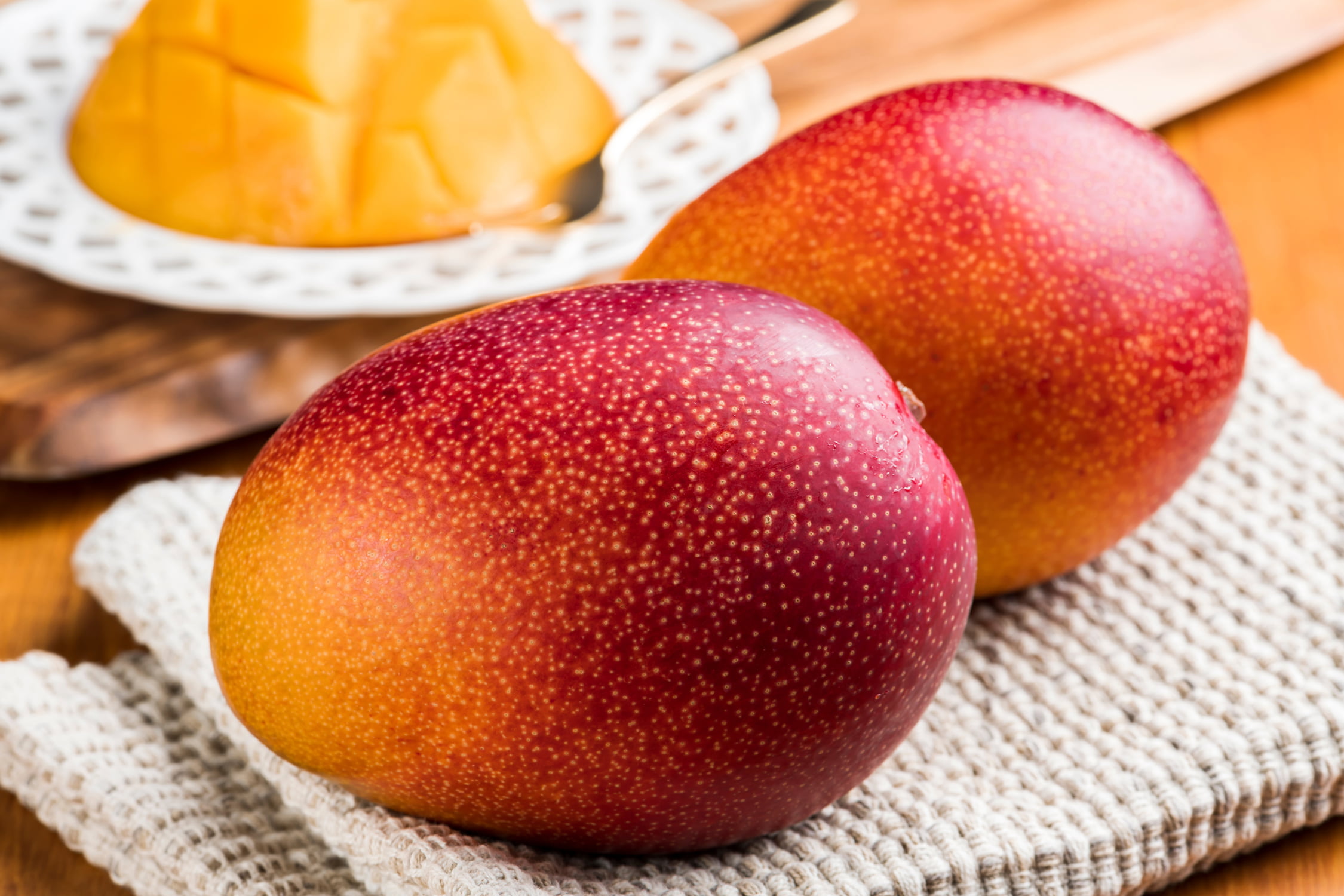In the heart of the Philippines, amidst lush green landscapes and tropical splendor, the Apple Mango reigns supreme as a beloved fruit. Known for its unique taste, exceptional sweetness, and versatility, the Apple Mango is an iconic fruit that holds a special place in the hearts of Filipinos and fruit enthusiasts worldwide.
In this article, we delve into the fascinating world of Apple Mango, exploring its origins, characteristics, uses, and significance in the Philippines.
The Origin of Apple Mango
The Apple Mango, scientifically known as Mangifera indica L., is native to the South Asian region, particularly India and Bangladesh.
The Philippines is believed to have been introduced to this fruit during the Spanish colonization, where it flourished and became a local favorite.
Today, the country is celebrated for producing some of the world’s finest Apple Mangoes.
Why Are They Called Apple Mangoes?
Apple Mangoes earned their name due to their distinct characteristics:
- Their oblong shape resembles that of an apple, setting them apart from traditional mangoes.
- The smooth, fiberless, and buttery texture of their flesh is similar to apple flesh, justifying the name.
- Their unique sweet and tangy flavor, distinct from traditional mangoes, adds to the association.
Furthermore, their culinary versatility, akin to apples, reinforced the name “Apple Mango.”

Characteristics of Apple Mango
Appearance
They are small to medium-sized fruits, usually measuring 3 to 5 inches in length.
They have a distinct oblong shape and yellow-green skin when unripe, which transforms into a bright yellow or golden hue when ripe. Their smooth skin is thin and easy to peel.
Flavor
What makes this fruit truly exceptional is its flavor. It is known for its delightful blend of sweet and tangy notes.
The flesh is tender, juicy, and succulent, delivering a burst of tropical sweetness in every bite. This harmonious balance of flavors distinguishes the Apple Mango from other mango varieties.
Texture
The flesh of this distinct variety is smooth, fiberless, and nearly buttery in consistency.
It is often described as melting in the mouth, making it a perfect choice for both eating fresh and using in culinary creations.
Ways to Enjoy Apple Mangoes

1. Culinary Delights
Apple Mangoes are revered for their versatility in Filipino cuisine. Their sweet and tangy flavor makes them a star ingredient in various dishes and desserts.
They lend their tropical charm to refreshing smoothies and shakes, and their natural sweetness is perfect for making jams and chutneys.
Apple Mangoes also elevate the flavors of savory dishes, such as mango salads, adobo, and grilled meats, offering a delightful twist to traditional recipes.
2. Fresh Consumption
Enjoying Apple Mangoes fresh is perhaps the most popular way to relish their succulent goodness. The experience is simple yet exquisite – peel and eat.
The sweet, juicy flesh is a true delight, especially during the scorching summer months.
Whether enjoyed as a refreshing snack or a standalone treat, the freshness of Apple Mangoes is a culinary joy.
3. Dried Mangoes
Drying slices of Apple Mangoes transforms them into a convenient and delicious snack that can be savored year-round. The process of drying naturally caramelizes the fruit’s sugars, intensifying their sweetness.
This results in a chewy, flavor-packed treat that retains the essence of the fresh fruit while offering an extended shelf life, making it a popular choice for on-the-go snacking.
4. Preserves and Pickles
Apple Mangoes find another delightful purpose as preserves and pickles. They are often transformed into tangy pickles or transformed into jam and chutney, extending their usability.
These preserved forms of Apple Mangoes offer a zesty and sweet condiment that pairs beautifully with various dishes, from rice and meat to cheese and bread.
5. Beverages
Apple Mangoes play a significant role in the world of beverages. Their sweet and fragrant flavor enhances the taste of tropical fruit juices, cocktails, and smoothies.
Their natural sweetness adds a delightful tropical twist to any drink. Apple Mangoes are a key ingredient in creating refreshing, tropical-flavored beverages that are popular both in the Philippines and worldwide.

Nutritional Benefits
Beyond their delectable taste and culinary versatility, Apple Mangoes offer a spectrum of nutritional benefits, making them a wholesome addition to your diet.
Here are some of the health advantages that these tropical delights provide:
Rich in Vitamins and Minerals
Apple Mangoes are a powerhouse of essential vitamins and minerals, particularly vitamin C, vitamin A, and vitamin E.
These vitamins bolster the immune system, promote healthy skin, and support good vision. They are also a source of vital minerals like potassium and magnesium, contributing to overall well-being.
Dietary Fiber
As a good source of dietary fiber, it aids in digestive health. Fiber promotes regular bowel movements and helps prevent constipation.
It also supports the maintenance of a healthy weight by promoting a feeling of fullness.
Antioxidant Properties
The fruit is loaded with antioxidants such as beta-carotene and quercetin, which help neutralize harmful free radicals in the body.
This, in turn, can reduce the risk of chronic diseases and cellular damage.
Heart Health
The potassium content in Apple Mangoes supports heart health by helping to regulate blood pressure.
Additionally, they contain dietary fiber, which can help reduce the risk of heart disease by maintaining healthy cholesterol levels.
Skin Health
The high vitamin C content contributes to collagen formation, essential for healthy skin. It also aids in the repair and rejuvenation of skin cells, promoting a radiant complexion.
Eye Health
The significant levels of vitamin A that are present in this fruit are crucial for good vision.
They help protect the eyes, enhance night vision, and reduce the risk of age-related macular degeneration.
Weight Management
Being low in calories and rich in fiber, it can support weight management by promoting a feeling of fullness and curbing unhealthy snacking.
Incorporating it into your diet can not only satisfy your taste buds but also provide a multitude of health benefits.
Whether enjoyed fresh, in smoothies or as a nutritious ingredient in dishes, Apple Mangoes are a delicious way to enhance your overall well-being.
Cultivation
Cultivating Apple Mangoes is a meticulous process that requires attention to detail to yield high-quality fruit. Here are key considerations for successful Apple Mango cultivation:
Climate and Location
Apple Mangoes thrive in tropical and subtropical climates, making the Philippines an ideal location for their cultivation.
With temperature requirements ranging from 25°C to 35°C (77°F to 95°F), the warm and humid climate of the Philippines provides the perfect environment for these trees to flourish.
Additionally, it demands abundant sunlight, requiring at least 6-8 hours of direct sun daily to support their growth and fruiting.
Soil Preparation
Well-draining soil is essential for the successful cultivation of Apple Mango trees. While they are adaptable to various soil types, sandy loam soil with a slightly acidic to neutral pH level is often recommended.
This type of soil ensures proper water drainage while providing the necessary nutrients for healthy tree development.
Planting
Young Apple Mango trees are usually planted in orchards or groves, where they have adequate space to grow and thrive.
Proper spacing is crucial to allow for sufficient air circulation, which can help minimize the risk of diseases. Depending on the variety, the trees can reach heights of 15 to 45 feet, necessitating consideration of their mature size during planting.
Irrigation
Consistent moisture is vital for the trees, particularly during their flowering and fruiting stages.
While these trees can tolerate periods of drought, regular and reliable irrigation is essential to ensure healthy growth and promote abundant fruit production. Adequate moisture helps prevent stress to the trees and encourages fruit development.
Pruning and Maintenance
Regular pruning is a necessary practice in Apple Mango cultivation. Pruning serves multiple purposes, such as shaping the tree, removing dead or diseased branches, and encouraging new growth.
It also contributes to the overall health and vigor of the tree. In addition to pruning, ongoing maintenance includes pest and disease management to safeguard the crop from potential threats and ensure the well-being of the trees.
Fertilization
Growing these trees benefit from a balanced fertilization regimen that provides essential nutrients to support their growth and fruit production.
The specific fertilization schedule may vary based on the soil conditions and the age of the tree. Adequate and timely fertilization is key to promoting robust tree development and high-quality fruit.

Harvesting
The fruits are typically harvested when they reach full maturity, indicated by their vibrant yellow or golden skin color and the presence of a sweet aroma.
This stage ensures that the fruit is at its peak of flavor and ripeness. The preferred method for harvesting is by hand-picking, which helps prevent damage to the fruit and ensures the preservation of its quality.
Post-Harvest Handling
Careful handling of the fruit is crucial after harvest to prevent bruising and maintain its quality.
Proper storage and transportation conditions are essential to preserve the freshness of Apple Mangoes. Post-harvest procedures play a critical role in ensuring that the fruit reaches consumers in the best possible condition.
Apple Mango cultivation in the Philippines not only caters to domestic consumption but also serves as an essential export crop, contributing significantly to the nation’s economy and providing livelihoods to local farmers and agricultural workers.
The combination of ideal climate, skilled cultivation, and meticulous care makes the Apple Mango a true tropical delight.
Apple Mango in Philippine Culture
Beyond its culinary applications, the Apple Mango plays a vital role in the economic landscape of the Philippines.
The country’s fertile soil and tropical climate provide the ideal conditions for Apple Mango cultivation, making it a significant export crop. The export of Apple Mangoes contributes to the nation’s economy and provides livelihoods to many farmers and agricultural workers.
Moreover, Apple Mangoes play a pivotal role in the country’s tourism industry. The annual Mango Festival, held in several regions, celebrates the fruit’s harvest and its cultural importance.
Tourists from around the world flock to the Philippines during this time to savor the delectable dishes and mango-based treats.
Conclusion
The Apple Mango, with its exceptional taste and versatile uses, holds a special place in Philippine culture and cuisine.
Its unique blend of sweetness and tanginess, coupled with its cultural significance, has made it a beloved fruit both locally and internationally.
Whether you enjoy it fresh, in dishes, or as a delightful snack, the Apple Mango is a true gem of the Philippines, showcasing the country’s natural bounties and rich culinary heritage.
Also Read: Kaong: The Sweet Sugar Palm Fruit, Growing Tips, And Nutritional Benefits
Well, what do you think about the article?
Did you enjoy reading “Apple Mango in the Philippines: An Overview“? We really hope that you have enjoyed this article. If you have any thoughts or comments about this post, please feel free to share them in the comment section below. We appreciate your feedback and would be glad to hear from you.
To see more content like this check the gardening section of Money For My Beer.

Lara is a freelance content writer and a cat mom to three furbabies, Mizu, Haru and Sora.
She graduated with a Bachelor’s Degree in Architecture and is a registered and licensed Architect. Aside from writing, she is fond of growing cacti and succulents and is a DIY type of girl.
During her free time, she engages herself in water-colouring and crocheting, while catching-up with an old tv series she just discovered. Lara loves to explore new places, but most of the time stays in her hometown province, reading historical romance novels over a cup of coffee – or matcha.

